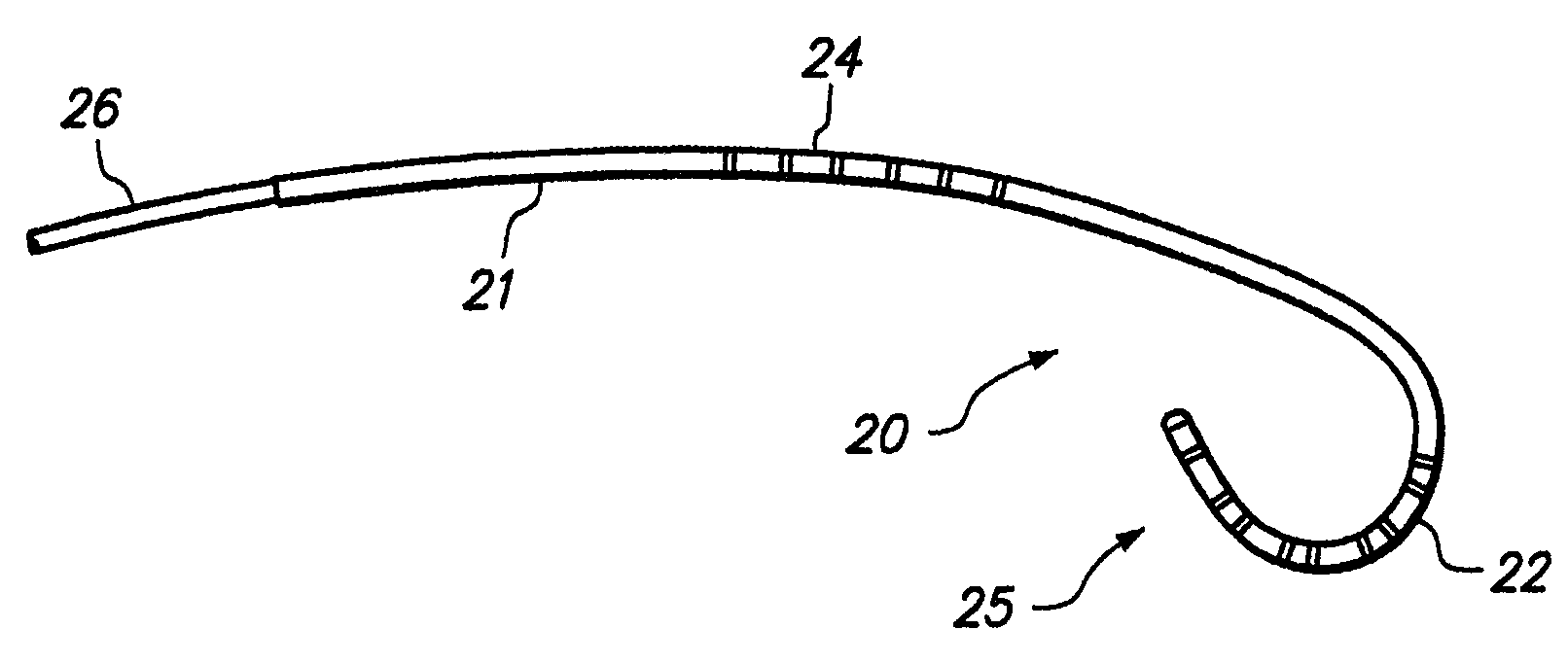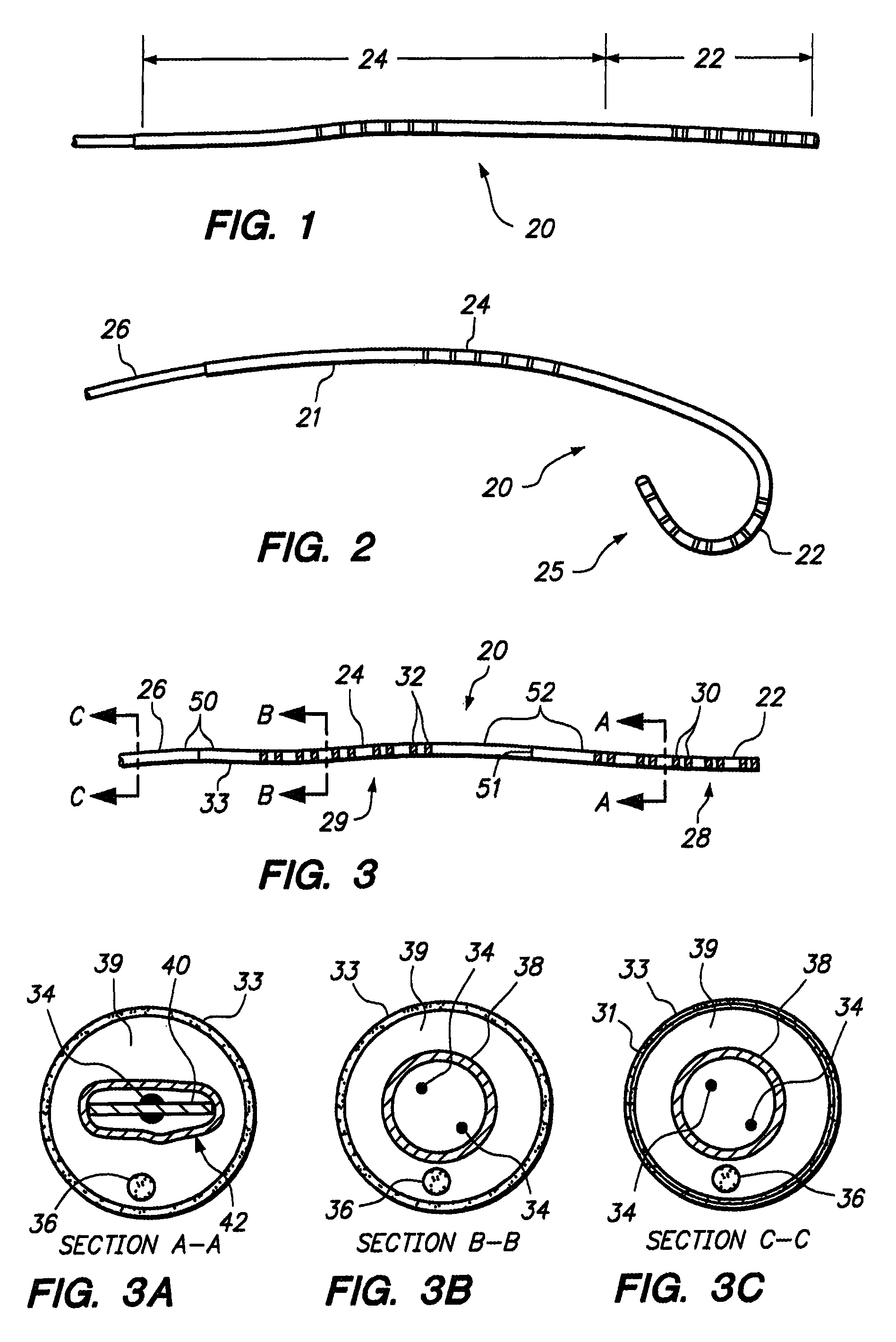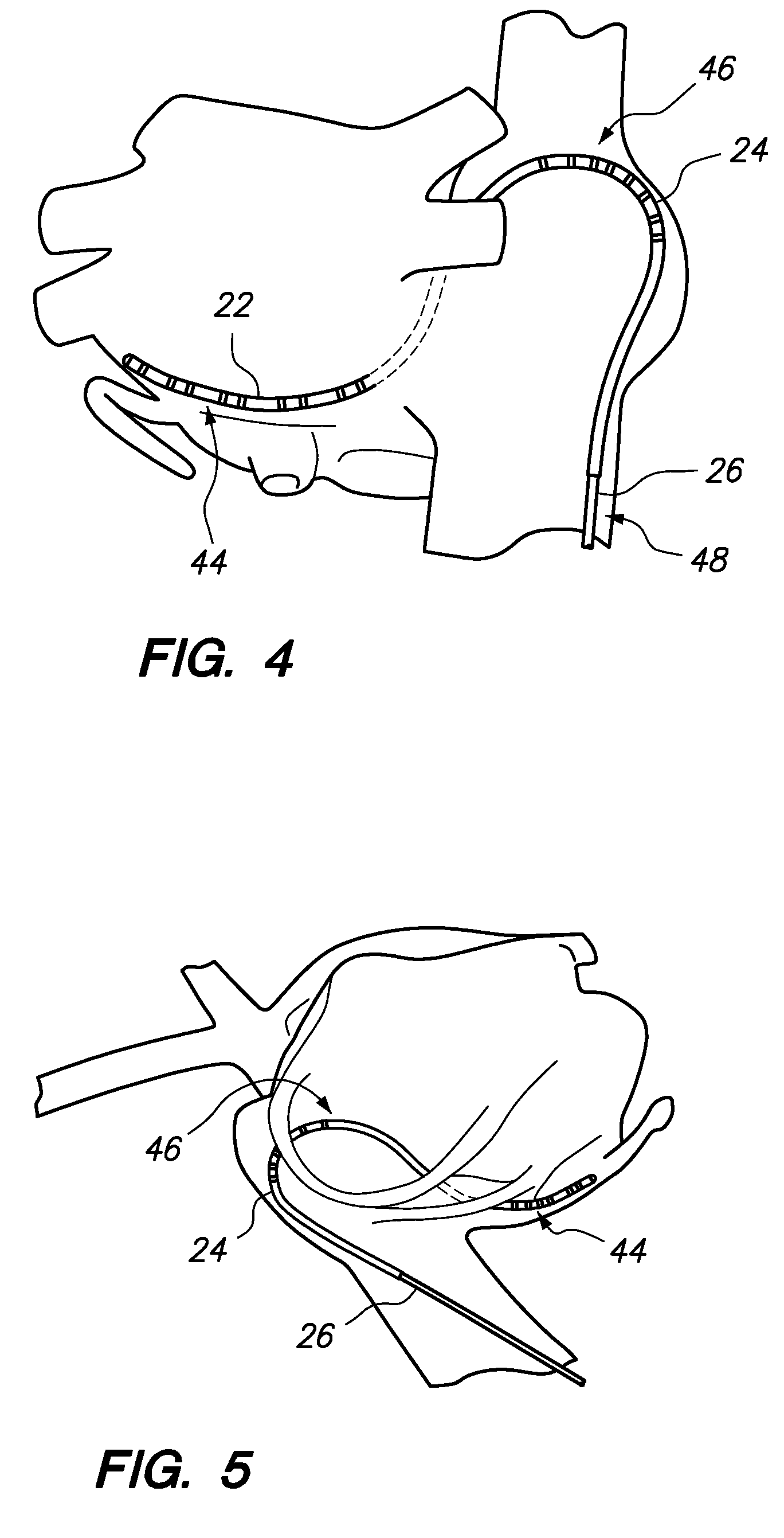Multi-bend steerable mapping catheter
a mapping catheter and multi-bend technology, applied in the field of electrophysiology (“ ep”) mapping catheters, can solve the problems of ineffective pumping of blood through the heart, blockage of mapping catheters extending across the isthmus, interference with ablation catheters, etc., and achieves the effect of facilitating prolapsing and increasing hardness
- Summary
- Abstract
- Description
- Claims
- Application Information
AI Technical Summary
Benefits of technology
Problems solved by technology
Method used
Image
Examples
Embodiment Construction
[0022]FIG. 1 depicts a distal portion of a diagnostic catheter 20 constructed in accordance with one embodiment of the invention. The catheter 20 comprises an elongate, flexible shaft 21 extending from a proximal handle (not shown), as is well-known in the art for electrophysiology catheters. The catheter shaft 21 generally includes a steerable distal section 22, and a prolapsing section 24 located immediately proximal of the distal section 20, which distal and prolapsing sections 22 and 24 are sized and configured for placement in a patient's coronary sinus (CS) and high right atrium (HRA), respectively. As best seen in FIG. 3, the catheter 20 is a “twenty pole” catheter, with ten electrodes 28 (comprising five electrode pairs 30) carried on the steerable distal section 22 for mapping in the CS, and another ten electrodes 29 (comprising five electrode pairs 32) carried on the prolapsing section 24 for mapping the HRA. The electrodes 28, 29 are coupled to respective lead wires that ...
PUM
 Login to View More
Login to View More Abstract
Description
Claims
Application Information
 Login to View More
Login to View More - R&D
- Intellectual Property
- Life Sciences
- Materials
- Tech Scout
- Unparalleled Data Quality
- Higher Quality Content
- 60% Fewer Hallucinations
Browse by: Latest US Patents, China's latest patents, Technical Efficacy Thesaurus, Application Domain, Technology Topic, Popular Technical Reports.
© 2025 PatSnap. All rights reserved.Legal|Privacy policy|Modern Slavery Act Transparency Statement|Sitemap|About US| Contact US: help@patsnap.com



